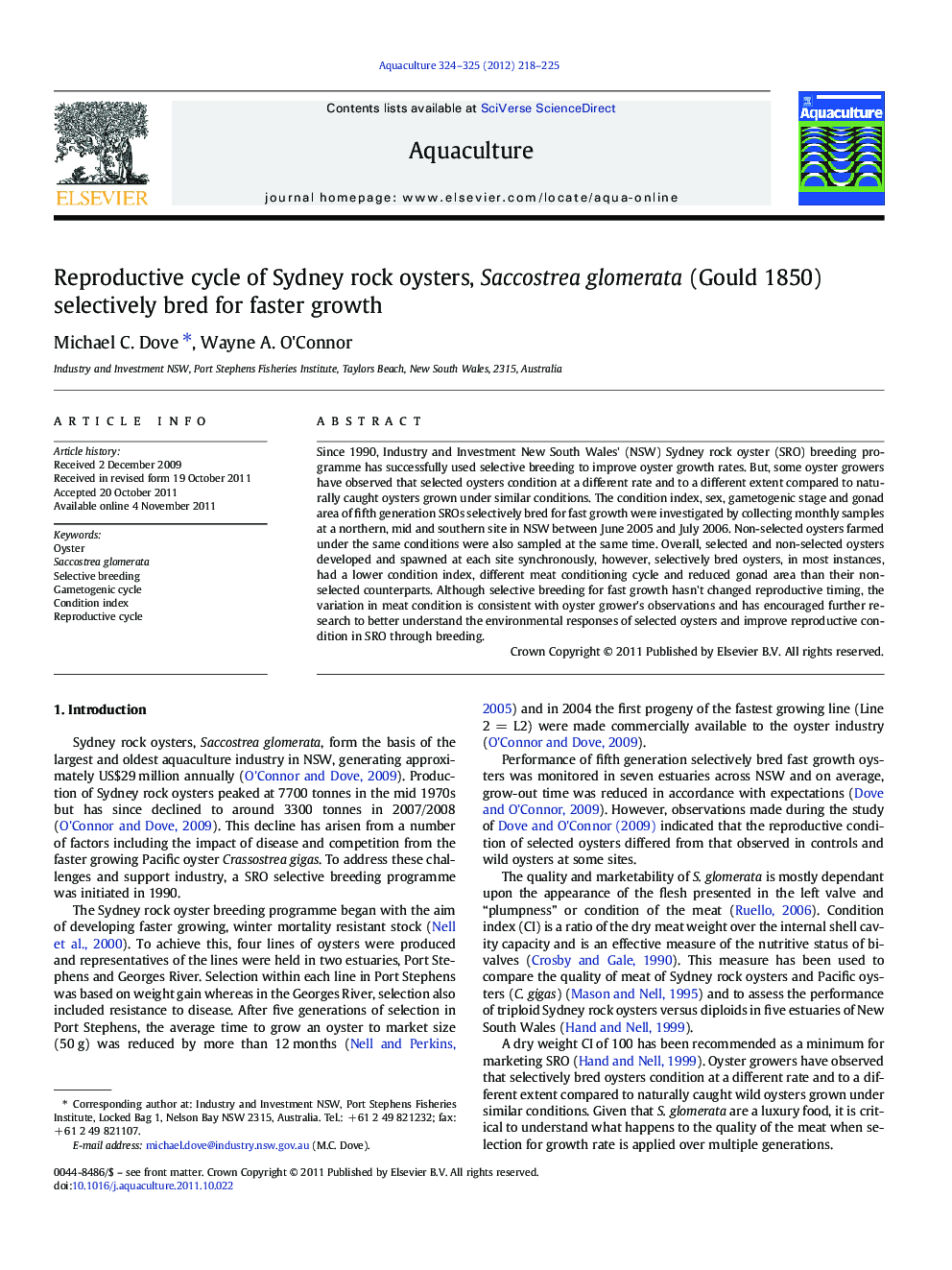| Article ID | Journal | Published Year | Pages | File Type |
|---|---|---|---|---|
| 2422780 | Aquaculture | 2012 | 8 Pages |
Since 1990, Industry and Investment New South Wales' (NSW) Sydney rock oyster (SRO) breeding programme has successfully used selective breeding to improve oyster growth rates. But, some oyster growers have observed that selected oysters condition at a different rate and to a different extent compared to naturally caught oysters grown under similar conditions. The condition index, sex, gametogenic stage and gonad area of fifth generation SROs selectively bred for fast growth were investigated by collecting monthly samples at a northern, mid and southern site in NSW between June 2005 and July 2006. Non-selected oysters farmed under the same conditions were also sampled at the same time. Overall, selected and non-selected oysters developed and spawned at each site synchronously, however, selectively bred oysters, in most instances, had a lower condition index, different meat conditioning cycle and reduced gonad area than their non-selected counterparts. Although selective breeding for fast growth hasn't changed reproductive timing, the variation in meat condition is consistent with oyster grower's observations and has encouraged further research to better understand the environmental responses of selected oysters and improve reproductive condition in SRO through breeding.
► We measured condition index, gametogenic stage and gonad area of selected oysters. ► These measures were compared to wild Sydney rock oysters at three sites. ► Selected oysters had a lower condition index and less gonad area. ► Gonad development and spawning was synchronous between the two oyster types. ► Research to include reproductive condition in a breeding programme is underway.
